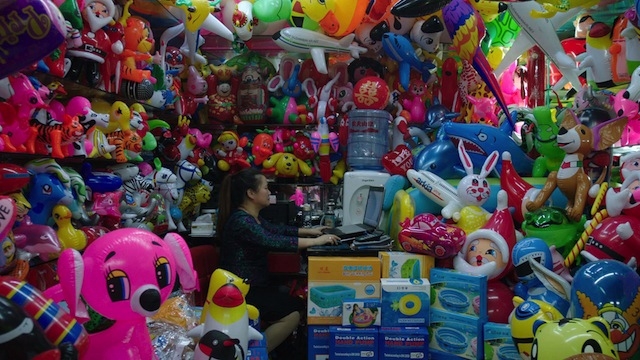Skulptur Projekte Münster, various venues, Münster, through 1 October
Though only four editions old, Skulptur Projekte Münster is a big deal. That’s because it manifests just slightly more regularly than Halley’s Comet and My Bloody Valentine albums – every ten years – and is always curated by the renowned Kasper König, who founded the German decennial in 1977. Set in the eponymous Westphalian city, SPM’s USP is straightforward: siting sculpture exclusively in public space. This year, though, it also expands to the neighbouring city of Marl, the annexe purportedly featuring five artists’ work. (Big German art shows that are tales of two cities being, of course, a very 2017 thing.) The 35 artists taking part include Jeremy Deller, Pierre Huyghe, Gregor Schneider and Cerith Wyn Evans, alongside others ranging from Indian/Japanese pairing CAMP, the Nigerian Emeka Ogboh and, working with the Peruvian-born Monika Gintersdorfer, Münster local boy Knut Klassen. And in terms of clarifying what ‘sculpture’ – or, excuse us, skulptur – means today, the organisers promise people walking on water, tattoos for pensioners and ‘human search engines’. (You know – the usual.)
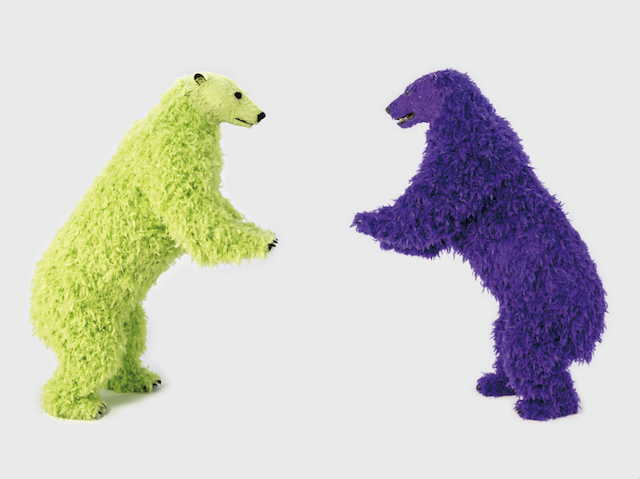
Paola Pivi, I and I (must stand for the art), 2014. Photo: Guillaume Ziccarelli. Courtesy the artist and Perrotin, Paris
Yokohama Triennale, various venues, Yokohama, 4 August – 5 November
Looking positively frequent in comparison, this year’s Yokohama Triennale – three of these for every one of König’s, for those who failed maths – adopts the titular theme of Islands, Constellations & Galapagos, intending thereby to refer to the contradictory nature of our current reality: strongly interconnected on the digital level but also ever more defined geopolitically by protectionism and isolationism, these driven in turn by populism and xenophobia. Aiming to think that through in a city famously defined by a node of connection – its port – the triennale this time convenes some 40 artists or groups from Japan and the rest of the world, fewer than usual in order to give each one something like a solo presentation. An archipelago or constellation of practices, then, to privilege some increasingly familiar terminology. And who’s big in Japan? Biennale stalwarts like Ai Weiwei, Olafur Eliasson and Ragnar Kjartansson, yes; but also choices such as Irish cross-media artist Kathy Prendergast, Tsuyoshi Ozawa (maker some years ago of a fictional museum of ‘soy sauce paintings’) and sort-of-Young British Artist Alex Hartley.
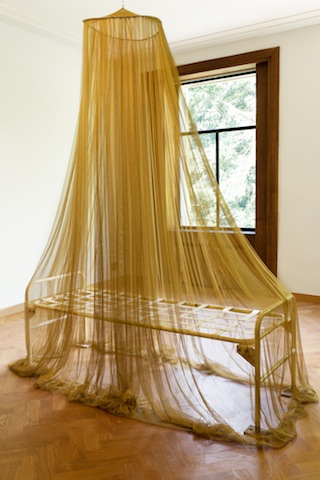
Mondialité, Boghossian Foundation, Brussels, through 27 August
Islands in the stream, that is what we are. Édouard Glissant didn’t say that, though maybe he hummed it once. But islands and archipelagos, as concepts rather than 1980s country-pop lyrics, were the late Martinican philosopher’s key subjects, and Hans Ulrich Obrist commented a while ago that he begins every day by reading Glissant, whose ideas have visibly shaped the curator’s own. Now, with Asad Raza, the Swiss supercurator has dedicated a group show, Mondialité, to Glissant’s ‘inspiring call for a global dialogue that does not erase local cultures’. In the Villa Empain, the Brussels mansion home to the Boghossian Foundation that has formerly been a Soviet embassy, a TV-station HQ and a squat that hosted a Mike Kelley show, the organisers are presenting ‘artworks, environments, documentary film and songs, dramaturgical structures and archival material’ by artists including Etel Adnan, Steve McQueen, Alighiero Boetti, Raqs Media Collective, Simone Fattal and almost 20 others. Expect, too, a rolling live programme of ‘choreographic and discursive events’, which recently kicked off with a day of interviews – as one might expect from the ever-inquisitive Obrist – and performances.

Ida Applebroog, Hauser & Wirth, London, through 29 July
Ida Applebroog, now eighty-seven, worked as an illustrator and jewellery-maker before turning to art, beginning in the late 1960s with drawings of her own genitals made with the help of a bathroom mirror before arriving, in her forties, at an almost cartoonish, thick-lined, quotation-heavy aesthetic (she’s called herself an ‘image scavenger’) that couches a focus on human bodies and gendered power relations. Regularly, it’s the hard, affectless stances of her figures that underline the violence she’s pointing towards; the current show, Mercy Hospital, though, assumes we know all that, and digs into the archives. We’re whisked back towards the start, to 1969–70 and a disturbing suite of drawings, lesser known than her vaginal imagery (which Applebroog nevertheless didn’t show until 2009), of amputated breasts and psychedelic clusters of figures and bodily organs. Some of the latter spout lines of anxious, beseeching text (eg ‘hey, wait for me!’); the tension of the later work is all there, but literally embodied in the gut. In 1970 the artist was hospitalised for depression and you might almost guess it; these works, though, glow persistently, even in darkness.
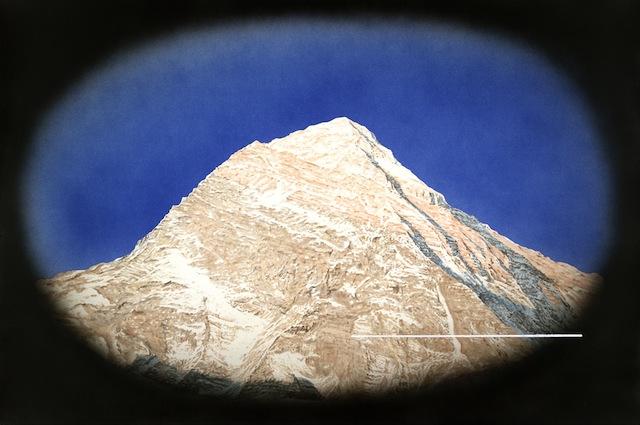
Ed Ruscha, Peder Lund, Oslo, through 10 September
When Applebroog made these drawings she was living in Southern California and her work involved language, but otherwise her art couldn’t have less in common with fellow SoCal resident Ed Ruscha’s analytic approach to word and image. Ruscha, eight years her junior and apparently tireless thanks to his laconism, still works on paper sometimes: see Peder Lund’s show of new works in the format. We might expect him to remain in the end-of-empire mode he’s assumed over the past decade or so, wherein (as in Ruscha’s show at this gallery five years ago) he’s been comparing Los Angeles now to how it was 50 years ago: a typically economical, compressive gambit that speaks eloquently about change and, implicitly, American decline. But, as usual, Ruscha – whose recent-ish London show was a frosty, text-driven meditation on scale, from the giant to the infinitesimal – appears to be dodging anticipations. An advance image from this show, Spied Upon Scene – One Liner (2017), suggests he’s revisiting the mountain imagery he patented in the 90s, this time vignetted as if through a telescope and overlaid not by text but a ‘one-liner’ that is indeed a single slim horizontal line, conveying both abstraction and redaction. If, as seems likely, Ruscha is thinking about surveillance and secrecy right now – who isn’t? – then his characteristic fruitful obliqueness hasn’t deserted him.

After the Fact, Lenbachhaus, Munich, through 17 September
Along with those dark arts of control, of course, there’s propaganda, the subject of After the Fact at Munich’s Lenbachhaus museum. This show and ‘events project’, though, isn’t a rollout of dusty old posters and re-screenings of Adam Curtis’s The Century of the Self (2002). (Though that influential TV series’ key figure, PR-man Edward Bernays, is mentioned pretty sharpish in the press text.) Featuring artists including Harun Farocki, Coco Fusco, Sean Snyder, Nancy Spero and Hannah Black, After the Fact is a less doctrinaire, seemingly more hopeful look at how, in the face of ‘fake news’ and ‘alternative facts’ – and, generally, the way that news disseminated online blurs truth and fiction – propaganda might be reconsidered as a different kind of force, ‘an analytical framework that is as potentially problematic as it might be helpful’. If the art here doesn’t look like propaganda, maybe it’s just extremely insidious propaganda.

Charlotte Prodger, Sculpture Center, New York, through 31 July
Charlotte Prodger has been a figure to watch for some years: now seems to be her moment. After an extended period of working primarily with old monitors and using loaded, found video and audio material – often redeploying, with disconnected but associative voiceovers, special-interest and subcultural activity on YouTube, eg sportswear-fetish videos or footage of dogs being put into trances – the Bournemouth-born, Glasgow-based artist recently took a stylistic leap towards a more mainstream format. It serves as a streamlining, a focusing: BRIDGIT (2016), a black-box projected-video installation, features discrete segments that each used up the memory on her iPhone: static shots of her trainer-clad feet in a tranquil domestic scene, hilly Scottish views that reference the Neolithic goddess called by many names including Bridget, disquisitions on the artist being mistaken for a man. As ever, fluidity of identity is at the work’s core, yet its own equivocation offsets any didacticism. At Sculpture Center, where the work is framed in terms of a Situationist dérive, BRIDGIT – note the title’s implicit pun – receives its US premiere.
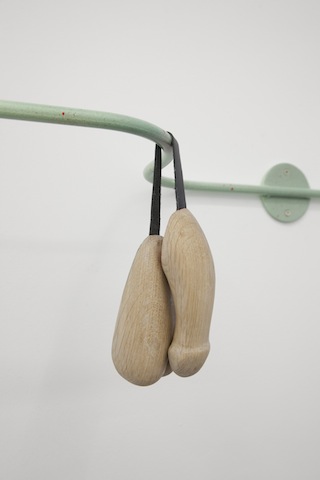
Kasia Fudakowski, Chert Lüdde, Berlin, through 17 June
Talking of divisions, visitors to Kasia Fudakowski’s show at Chert Lüdde are greeted with a choice and a restriction: enter the gallery via the left or right door, and don’t go in the other side. Once in one space, the show cleaves again. A series of wooden, wall-mounted sculptures are gendered either male or female, while a book comprises an example of fan fiction – authored by the artist, who a few years ago did a performance in the same gallery involving her telling unfunny jokes – that fantasises about bringing together two late rogue figures: avant-garde comedian Andy Kaufman and artist Lee Lozano. (The artworks in turn appear to reference both Lozano’s work and Kaufman’s switch from comedy to intergender wrestling.) In the spirit of those recalcitrant artists, something of the show is invariably withheld – though, of course, you can take someone else with you, the someone else can own a phone with a camera and the gallerist might gently point out that you can meet your companion to compare notes in the gallery’s bijou little bookshop.
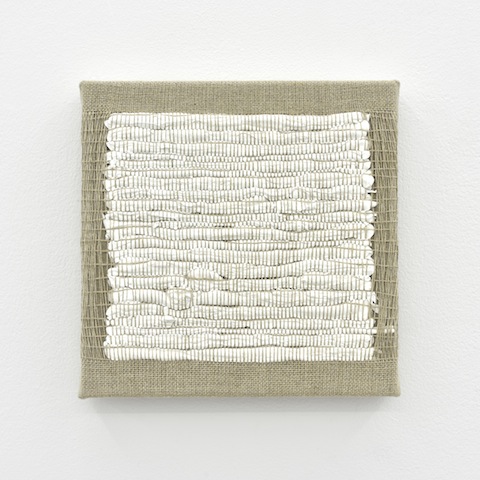
Analia Saban, Praz-Delavallade, Paris, through 17 June
Analia Saban is Broken was the title of a previous show by the Argentinian artist – a painter, if hardly a traditional one – but it feels like a misnomer, so confidently does Saban find new wrinkles in materialism. She sometimes uses laser-cutting to sculpt her paint, leaving shapely and intermittently figurative shreds attached to the canvas; early works, meanwhile, involved swollen ‘bags’ of paint resting on the floor. Recently she’s gone more minimal, gorgeously so, threading acrylic paint through the weave of linen to create a labour-intensive white monochrome or a dun-coloured square of cloth through which, in a ripped area, black paint bulges. So, yes, clearly Saban owes plenty to modernist pioneers. But the sheer inventiveness with which she moves through the evolution of materialist thinking in painting – a rapid-fire replay and compaction of a century’s innovation – is bracing in itself, and there’s constantly a sense of incremental new developments being located, making her appear, oddly, as at once a classicist and a forward-thinker. If that constitutes broken, we can wait for it to be fixed.
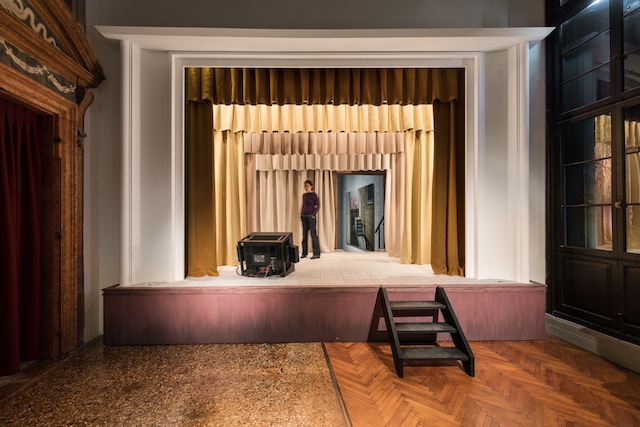
The Boat is Leaking. The Captain Lied. Fondazione Prada, Venice, through 26 November
And finally: the Venice Biennale is on again, of course, but we’re not talking about it; that was last month. Running parallel with the show, though, is the Prada Foundation’s The Boat is Leaking. The Captain Lied., a ‘transmedia exhibition project’ unfolding across three floors of the restored fifteenth-century palazzo Ca’ Corner Della Regina, and a collaboration between writer and filmmaker Alexander Kluge, artist Thomas Demand, costume designer Anna Viebrock and Berlin Nationalgalerie director Udo Kittelmann. The starting point, it appears, is misprision – fruitful misunderstanding – as each protagonist comes to his or her own conclusions about a painting, Angelo Morbelli’s nineteenth-century Giorni… Ultimi, which in the past has been considered (wrongly) to depict some retired sailors in a Milanese hostel. The subjective ‘responses’ by the participants, assumedly avoiding that reading, are expected to intersect and overlap, mixing art, film and stage settings. And, of course, this being the sinking ship that is 2017, the title is culled from a Leonard Cohen song. Strangely, nobody seems to have yet made a show called Don’t Go Home with Your Hard-On, but it’s only a matter of time.
First published in the Summer 2017 issue of ArtReview
